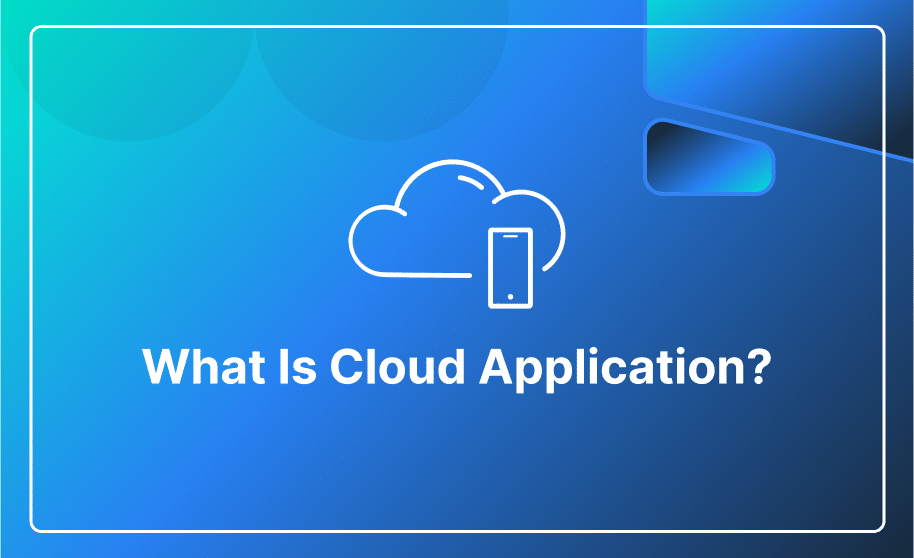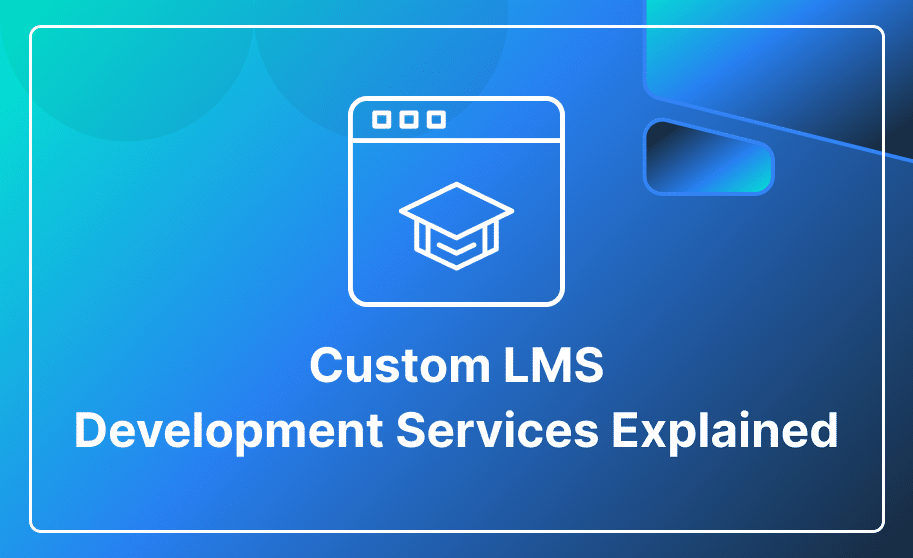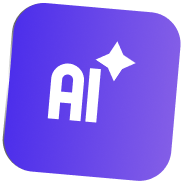Cloud applications are software solutions deployed in the cloud instead of on local machines or servers. These applications are extensively used by companies of all sizes.
In the last ten years, cloud computing has transformed the technological realm. Now, many common applications have transitioned from functioning as local clients on personal computers or mobile devices to running via the Internet.
In this blog post, we will provide you with a brief overview of everything you need to know about cloud applications.
What is a Cloud-Based Application?
A cloud application is a software program that runs over the internet, with processing and storage taking place in the online environment often metaphorically termed “the cloud.” While the application’s front end can be in the form of a dedicated app or a web browser, essential elements like data storage are online.
The physical servers for cloud applications are situated in remote data centers and managed by a cloud services IT infrastructure provider. Today, numerous cloud applications can take over various tasks, including:
- Cloud-based file storage
- File sharing
- Data entry
- Word processing
- Cloud-based inventory management systems
- Customer relationship management (CRM) software
- Videoconferencing tools
- financial accounting software
- Data collection
The Benefits of Cloud-Based Software Applications
Cloud based apps provide numerous advantages to organizations, including:
- Quick Response Times:
Cloud applications enable rapid testing, updating, and deployment, enhancing organizational agility and speed up time-to-market. This ability raises a transformative shift in company culture.
- Simplified, Flexible Operations:
Outsourcing infrastructure management to third-party vendors allows businesses to focus more on fundamental operations, raising customer relationships, and achieving primary company objectives while minimizing IT-related concerns.
- Mobility and Accessibility:
Cloud applications facilitate access from various devices, promoting seamless collaboration among teams irrespective of location and increasing productivity and flexibility.
- Insights:
Cloud-based storage solutions offer combined analytics, facilitating data analysis for informed decision-making and improved operational efficiency. Customized reporting and tracking mechanisms further enhance insights and streamline processes.
- Immediate Scalability:
Cloud platforms enable automatic or manual capacity adjustments, ensuring optimal resource allocation and cost efficiency in response to changing demand.
- Quality Control:
With cloud-based systems, documentation is stored in one place and in one format allowing everyone to access the same version. It maintains consistency in data and avoids human error creeping in. It also prevents employees from accidentally saving different document versions and leads to confusion.
- Automatic Updates:
Cloud-based applications undergo automatic updates, ensuring high performance and releasing the IT department from manual update tasks, thus boosting productivity and efficiency.
- Use of APIs:
API integration facilitates seamless access to third-party data and services, streamlining development processes and ensuring predictable outcomes, thereby accelerating innovation.
- Cost Reductions:
Cloud-based applications offer cost-effective solutions compared to on-premises alternatives, leveraging the scale and competition among providers to deliver affordable services to businesses.
- Better Data Sharing:
Cloud storage enables immediate data access with appropriate permissions, facilitating smoother workflows and enhancing employee productivity.
- Increased Security:
Cloud providers offer robust security measures and expertise, ensuring data integrity and flexibility against threats, thus enhancing overall security position.
- Sustainability:
With environmental issues ever more top of mind, organizations need to play their part behind the planet. Embracing a cloud-based infrastructure can lead to savings in energy costs and reduce expenditures on hardware, paper, and other resources.
Categorizing Cloud Applications: An In-Depth Look
There are three primary types of applications in the cloud:
- Software as a Service (SaaS):
Software as a Service (SaaS) is one of the most popular and common third-party cloud applications. SaaS not only offers the necessary hardware and software for running the application but also provides extensive customer support for both systems and applications. Some well-known examples of SaaS providers include Google Workspace, Gmail, and Google Drive.
- Infrastructure as a Service (IaaS):
In Infrastructure as a Service (IaaS) cloud computing, the provider manages the infrastructure, which includes physical servers, networks, virtualization, and storage. It can be accessed through a public or private cloud. The provider handles outages, maintenance, and hardware problems, while the user controls the operating system, applications, and middleware by accessing the infrastructure through an API or dashboard.
Examples of IaaS providers include Amazon Web Services (AWS), Microsoft Azure, and Google Compute Engine.
- Platform as a Service (PaaS):
Platform as a Service (PaaS) provides users with a platform to create, run, and manage applications without building or maintaining the infrastructure or cloud setup.
It offers a complete environment for developing and deploying applications, equipped with frameworks, libraries, and tools, which makes it a good choice for developers and programmers.
Some examples of PaaS vendors are Google App Engine, Microsoft Azure App Service, and Heroku.
What are the Cloud Application Models?
Three common cloud-based application models offer ways for cloud services to store their data and host services; these are public, private, and hybrid cloud. It is important to select the right model – one that aligns with the size of your business and its requirements.
- The Public Cloud:
A public cloud service operates on an external platform managed by a provider, offering users their own cloud space within a shared infrastructure. Security and maintenance responsibilities are handled by the cloud provider. Public clouds are ideal for companies seeking a flexible and cost-effective solution to access the latest cloud technologies. However, security measures are entrusted to third-party entities.
- The Private Cloud:
A private cloud is a platform established on-premises using exclusive hardware and software, managed by the organization’s internal IT team. This model suits enterprise-level companies desiring exclusive access to a cloud environment with enhanced control and flexibility in development. Industries with rigorous security demands, such as healthcare or finance, often choose the private cloud option. However, it can involve higher costs due to investments in hardware and specialized skill sets for cloud application development.
- The Hybrid Cloud:
The hybrid cloud integrates both public and private cloud environments, with some cloud components managed on-site by the organization’s IT team and others managed offsite. This setup is ideal for businesses seeking to hold control over sensitive corporate data through in-house databases while utilizing third-party providers for less critical data storage.
Hashlogics: Your Trusted Cloud Application Development Company
At Hashlogics, our team specializes in delivering high-quality software development services, with a specialized focus on custom cloud application development.
Our professionals have two decades of experience in building cloud app development. They possess a deep understanding of cloud infrastructure, database management, networking, and advanced technologies such as hypervisor and data visualization.
Trust Hashlogics for comprehensive consultancy on all aspects of cloud development, and let us partner with you to transform your ideas into reality.
Conclusion:
Cloud-based applications have revolutionized business operations globally. With just one click, employees can access digital applications that work seamlessly across the office and remotely. These digital apps allow them to communicate with colleagues and clients anytime, anywhere, and from any device.
Understanding the concept of cloud-based application development shows its popularity. From a business perspective, the cloud is the future and perhaps the most effective approach to software development. Stay tuned for further advancements! Hopefully, this blog has provided you with a comprehensive understanding of cloud applications.














